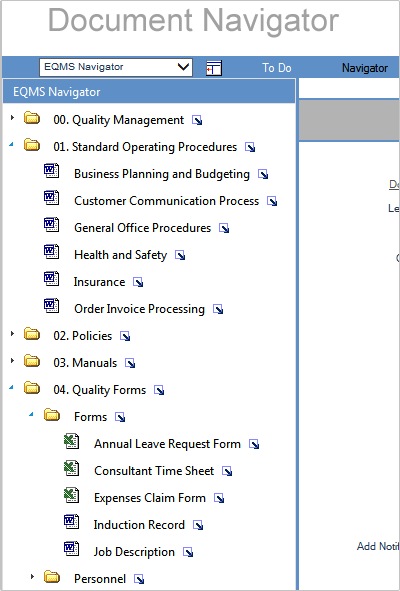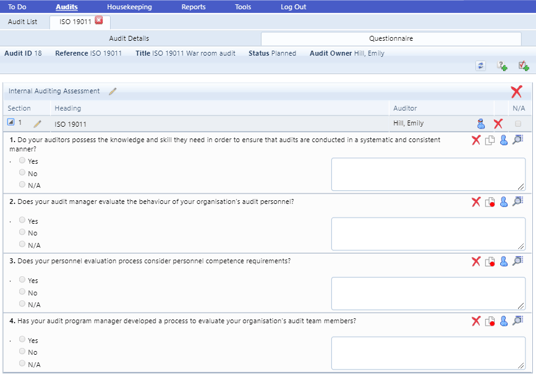Want to contribute to this article?
There's no denying that the requirements of GxP can be a huge time sink for quality teams.
Cementing sensible procedures that everyone in the business follows, closely monitoring the working environment, controlling calibration, cleaning and deviation protocols.
This isn't easy.
So more and more quality teams are turning to electronic cloud-based software systems to streamline, centralise and automate GxP operation for their businesses.
But there's still uncertainty.
Which software features can they realistically apply to their operations?
What benefits can they expect to see?
And what should they look for as they scout potential software vendors?
We put together the key things to look for in an electronic GxP system.

The 3 roadblocks
Charlie Munns, Business Development Executive at Qualsys, coaches businesses at the very start of their electronic GxP journey.

Charlie has pinpointed the 3 key roadblocks that GxP businesses need to consider early on in their software journey.
1. Risk aversion
GxP requirements usually relate to businesses operating in the food or pharmaceutical sectors.
The prevailing mindset of these businesses tends to be that of a low risk appetite, taking few risks and preferring secure, tried and tested operations that get results.
A brand new system transforming and modernising operations with computerised compliance is likely to ruffle feathers in an organisation with a risk-averse attitude.
So it's important to work with this mindset rather than against it: consider and compile all the risks an electronic GxP system might pose to your business, then assess potential vendors in relation to their software's ability to mitigate or avoid those risks.
For instance:
- One of our main customers demands that we work to GAMP requirements
- So a non-GAMP-validated computer system threatens our ability to meet those requirements and could jeopardise our relationship with that customer
- So we should only shortlist software systems with a full GAMP 5 validation process, and gather as much information from each vendor as we can to ensure we're comfortable with the process
One of our customers did exactly that.
2. Flexibility
GxP is a loose umbrella term for a diverse range of business requirements.
Good Manufacturing Practice for a food business will look very different to Good Clinical Practice for a trial provider.
And your quality and compliance requirements will vary depending on your country, sector, and even your customers' preferences.
So it's important to consider systems with enough flexibility to be geared towards your specific GxP needs.
Do this by taking a look at the existing customer base and product scope of potential software vendors.
For example:
Life science-specific vendors have the advantage of a closely tailored solution - which might work perfectly if this is your industry - but on the other hand will offer less flexibility for future compliance changes, or if your requirements aren't purely life science-related.

3. Information security and ownership
A cloud-based software system means storing your business-critical data in a cloud hosted and maintained by a third party, while still being responsible for all your own regulatory compliance.
In the modern age of cyber breaches and hacking, that means it's crucial that you consider how your data will be secured and protected by that third party, so you can show your auditors that your infrastructure is strong and validated.
And if you're a medical device manufacturer, cyber security has an extra dimension of importance.
Legislation such as the MDR's Annex 1 combines information security risk with the direct physical harm to patients considered in ISO 14971 to give a new, broader definition of risk, where a cyber breach can be as harmful to your patient as an actual medical device fault.
For any GxP business, cyber security is essential.
So finding a secure, ISO 27001-accredited cloud - or a provider who offers on-premise hosting if you're uncomfortable with a cloud-based system - is the third piece of the puzzle as you look for an electronic GxP system.
Consider the 483s
You should only implement a system that can improve and simplify how your business manages GxP compliance.
That means taking stock of what you're currently struggling with, and what you can improve on.
The FDA 483 'inspectional observation' form is a useful insight into where GxP businesses typically fall down, and where FDA auditors will appreciate conformance.
The top 10 most common FDA 483 observations are (in no particular order):
1. Undocumented or ignored quality procedures
2. Undocumented, unestablished or ignored sterile drug procedures
3. Unestablished production and process control procedures
4. Deviation from calibration/inspection programmes
5. Deviation from maintenance/cleaning/sanitation plans
6. Inadequate investigations of discrepancies
7. Inadequate environmental monitoring
8. Inappropriate/scientifically unsound test procedures, specifications, standards and sampling plans
9. Failure to determine spec conformance before release for distribution
10. Failure to monitor performance of manufacturing processes
You might recognise some (or all) of these non-conformances as a problem in your business.
Considering how (and if!) an electronic GxP system will help you fix these issues is crucial as you search for a system.
If you're struggling with having visible, documented procedures to show an auditor, consider implementing a document management system.

If you're falling down on environmental or manufacturing check-ups, start looking for audit or inspection management software, and so on.

A problem-based approach with honest assessment of where you can improve will allow you to pinpoint an electronic GxP system that works for your business.
And keeping the early hurdles of risk, flexibility and information security concerns in mind will help you secure internal buy-in and ask the right questions of your potential vendors.
Next steps
Ready to start your electronic GxP journey?
Learn how 15 businesses applied quality management software to their GxP operations in our case study e-book:







Share your thoughts on this article